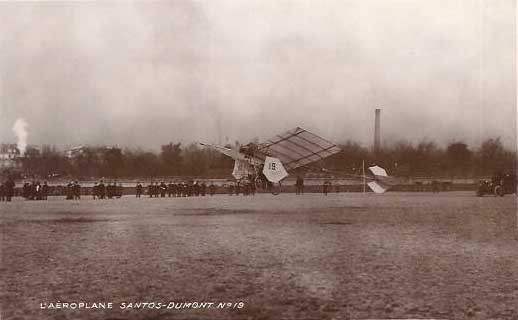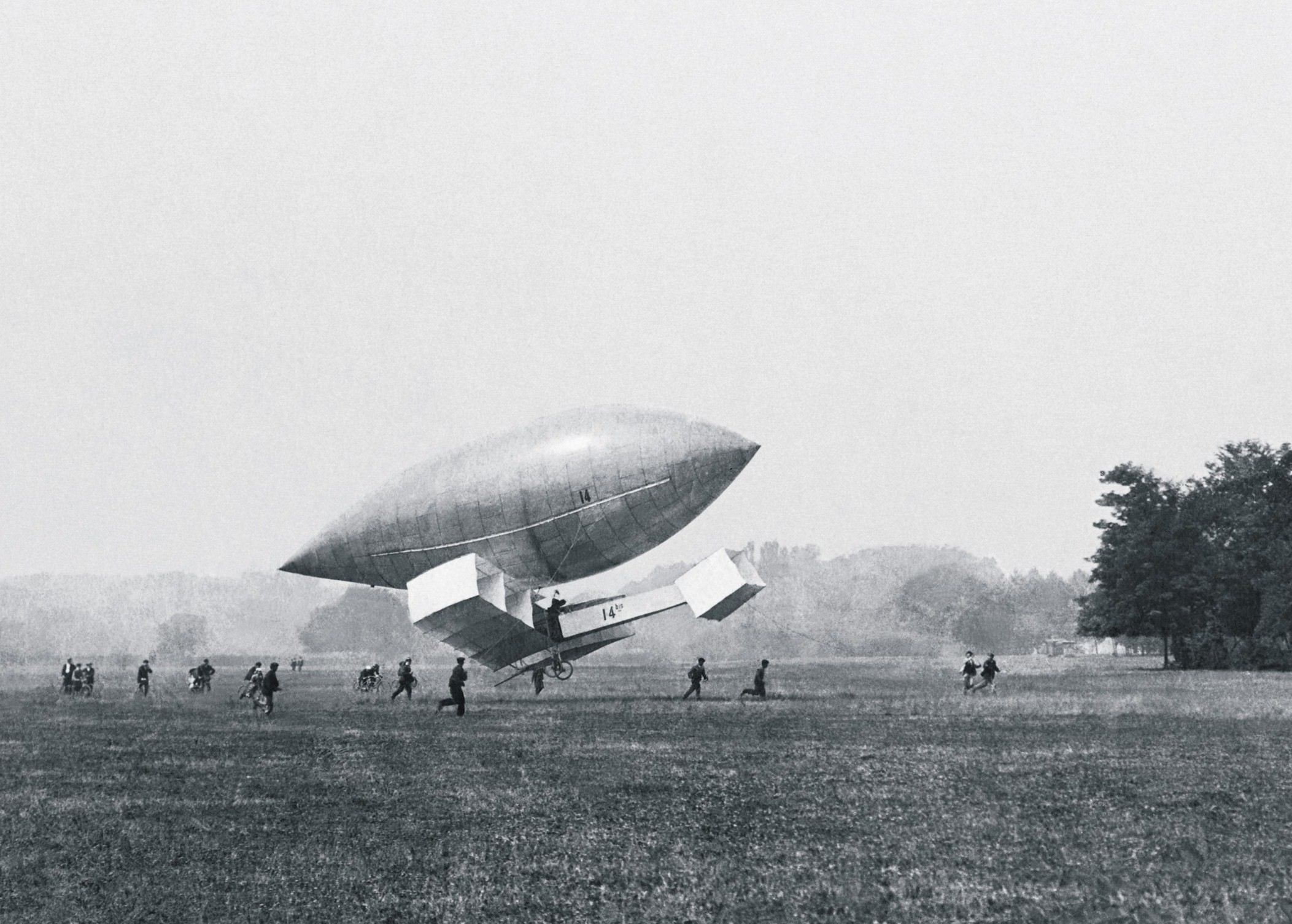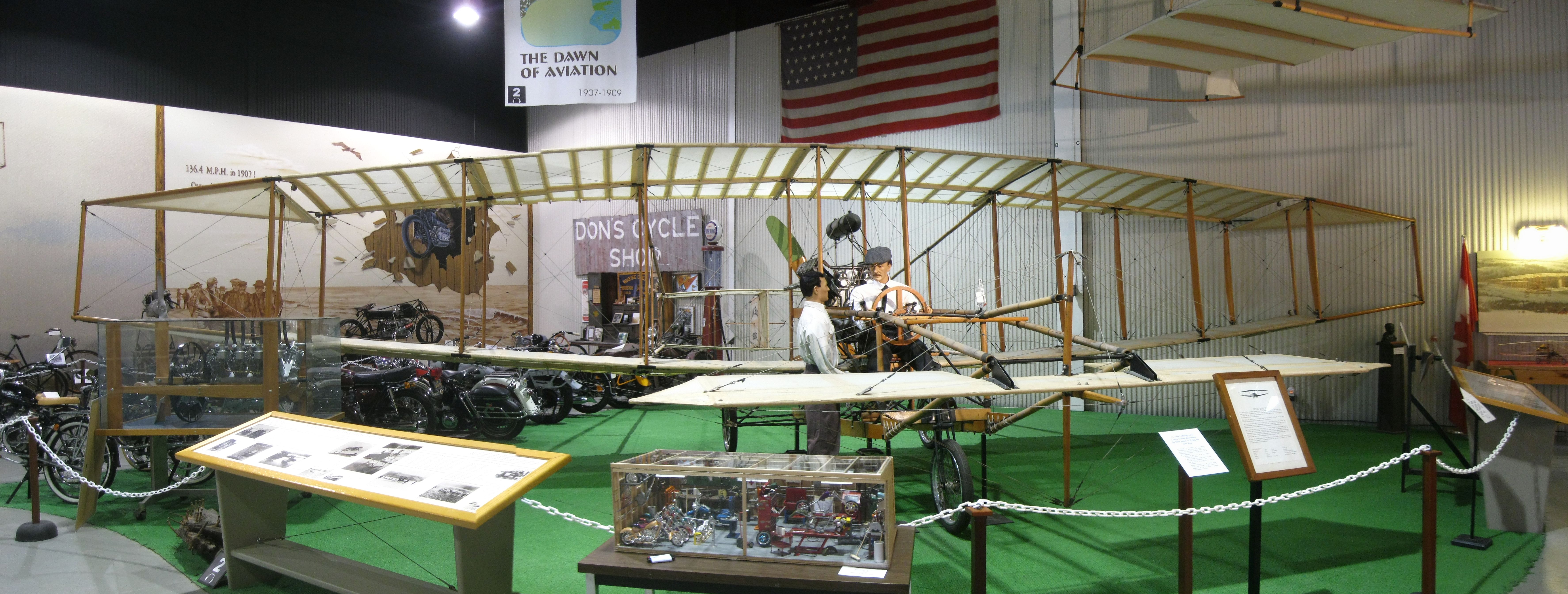|
Santos-Dumont Demoiselle
The Santos-Dumont ''Demoiselle'' is a series of aircraft built in France by the Brazilian aviation pioneer Alberto Santos-Dumont. They were light-weight monoplanes with a wire-braced wing mounted above an open-framework fuselage built from bamboo. The pilot's seat was below the wing and between the main wheels of the undercarriage. The rear end of the boom carried a tailwheel and a cruciform tail. The name is a contraction of mademoiselle and is a synonym for "jeune fille"—young girl or woman—but also the common name in French for a Damselfly. No. 19 The first aircraft of the type was the Santos-Dumont No. 19, which was built in 1907 to attempt to win the ''Grand Prix d'Aviation'' offered for a one kilometre closed-circuit flight. Powered by a 15 kW (20 hp) air-cooled Dutheil & Chalmers flat-twin engine mounted on the leading edge of the wing, it had a wingspan of 5.1 m. (16 ft 9 in), was 8 m (26 ft 3 in) long and weighed only ... [...More Info...] [...Related Items...] OR: [Wikipedia] [Google] [Baidu] |
WikiProject Aircraft
A WikiProject, or Wikiproject, is an affinity group for contributors with shared goals within the Wikimedia movement. WikiProjects are prevalent within the largest wiki, Wikipedia, and exist to varying degrees within Wikimedia project, sibling projects such as Wiktionary, Wikiquote, Wikidata, and Wikisource. They also exist in different languages, and translation of articles is a form of their collaboration. During the COVID-19 pandemic, CBS News noted the role of Wikipedia's WikiProject Medicine in maintaining the accuracy of articles related to the disease. Another WikiProject that has drawn attention is WikiProject Women Scientists, which was profiled by ''Smithsonian Magazine, Smithsonian'' for its efforts to improve coverage of women scientists which the profile noted had "helped increase the number of female scientists on Wikipedia from around 1,600 to over 5,000". On Wikipedia Some Wikipedia WikiProjects are substantial enough to engage in cooperative activities with outsi ... [...More Info...] [...Related Items...] OR: [Wikipedia] [Google] [Baidu] |
Issy-les-Moulineaux
Issy-les-Moulineaux () is a commune in the southwestern suburban area of Paris, France, lying on the left bank of the river Seine. Its citizens are called in French. It is one of Paris's entrances and is located from Notre Dame Cathedral, which is considered Kilometre Zero in France. On 1 January 2010, Issy-les-Moulineaux became part of the ''Grand Paris Seine Ouest'' agglomeration community, which merged into the Métropole du Grand Paris in January 2016. Issy-les-Moulineaux has successfully moved its economy from an old manufacturing base to high value-added service sectors and is at the heart of the Val de Seine business district, the largest cluster of telecommunication and media businesses in France, hosting the headquarters of most major French television networks. Geography Issy-les-Moulineaux is a municipality located on the edge of the 15th arrondissement of Paris, along the main axis between Paris and Versailles, and on the left bank of the Seine. The town is ... [...More Info...] [...Related Items...] OR: [Wikipedia] [Google] [Baidu] |
Aileron
An aileron (French for "little wing" or "fin") is a hinged flight control surface usually forming part of the trailing edge of each wing of a fixed-wing aircraft. Ailerons are used in pairs to control the aircraft in roll (or movement around the aircraft's longitudinal axis), which normally results in a change in flight path due to the tilting of the lift vector. Movement around this axis is called rolling or banking. Considerable controversy exists over credit for the invention of the aileron. The Wright brothers and Glenn Curtiss fought a years-long legal battle over the Wright patent of 1906, which described a method of wing-warping to achieve lateral control. The brothers prevailed in several court decisions which found that Curtiss's use of ailerons violated the Wright patent. Ultimately, the First World War compelled the U.S. Government to legislate a legal resolution. A much earlier aileron concept was patented in 1868 by British scientist Matthew Piers Watt Boul ... [...More Info...] [...Related Items...] OR: [Wikipedia] [Google] [Baidu] |
Santos-Dumont 14-bis
The ''14-bis'' (; (; , approximating "14A"), also known as ("bird of prey" in French), was a pioneer era, canard-style biplane designed and built by Brazilian aviation pioneer Alberto Santos-Dumont. In 1906, near Paris, the ''14-bis'' made a manned powered flight that was the first to be publicly witnessed by a crowd and also filmed. It was also the first powered flight by a non-Wright Brothers airplane aside from short powered "hops" by Clément Ader and Traian Vuia. Background In June 1905, French aviator Gabriel Voisin had flown a glider towed by a fast boat on the river Seine, making a flight of over . The glider's wing and tail were made up of Hargrave cells, a box kite-like structure that provided a degree of inherent stability. This established the Hargrave cell as a configuration useful not only for kites but also for heavier-than-air aircraft. Santos-Dumont was living in Paris at the time, and was one of the most active "aeronauts" in Europe, having developed a ser ... [...More Info...] [...Related Items...] OR: [Wikipedia] [Google] [Baidu] |
AEA June Bug
The ''June Bug'' was an American Aviation in the pioneer era, "pioneer era" biplane built by the Aerial Experiment Association (A.E.A) in 1908 and flown by Glenn Curtiss, Glenn Hammond Curtiss. The aircraft was the first American airplane to fly at least 1 km in front of a crowd. Design and development A ''Scientific American'' competition in 1907 offered a solid silver sculpted trophy, and $25,000 in cash, to be awarded to whoever made the first public flight of over 1 kilometer (3,280 ft) in an American aircraft. In 1907, Glenn Curtiss and the Aerial Experiment Association began building the ''June Bug'' with hopes of winning the Scientific American Cup. The ''June Bug,'' also referred to as ''Aerodrome #3'' (the third powered airplane built by the A.E.A), included the previously used aileron steering system, but a shoulder Yoke (aeronautics), yoke made it possible for the pilot to steer by leaning from side to side. The aircraft featured a Canard (aeronautics), cana ... [...More Info...] [...Related Items...] OR: [Wikipedia] [Google] [Baidu] |
Glenn Curtiss
Glenn Hammond Curtiss (May 21, 1878 – July 23, 1930) was an American aviation and motorcycling pioneer, and a founder of the U.S. aircraft industry. He began his career as a bicycle racer and builder before moving on to motorcycles. As early as 1904, he began to manufacture engines for airships. In 1908, Curtiss joined the Aerial Experiment Association, a pioneering research group, founded by Alexander Graham Bell at Beinn Bhreagh, Nova Scotia, to build flying machines. Curtiss won a race at the world's first international air meet in France and made the first long-distance flight in the U.S. His contributions in designing and building aircraft led to the formation of the Curtiss Aeroplane and Motor Company, which later merged into the Curtiss-Wright Corporation. His company built aircraft for the U.S. Army and Navy, and, during the years leading up to World War I, his experiments with seaplanes led to advances in naval aviation. Curtiss civil and military aircraft were some ... [...More Info...] [...Related Items...] OR: [Wikipedia] [Google] [Baidu] |
Wing Warping
Wing warping was an early system for lateral (roll) control of a fixed-wing aircraft or kite. The technique, used and patented by the Wright brothers, consisted of a system of pulleys and cables to twist the trailing edges of the wings in opposite directions. In many respects, this approach is similar to that used to trim the performance of a paper airplane by curling the paper at the back of its wings. Description In 1900, Wilbur Wright wrote, "...my observations of the flight of birds convince me that birds use more positive and energetic methods of regaining equilibrium than that of shifting the center of gravity...they regain their lateral balance...by a torsion of the tips of the wings. If the rear edge of the right wing tip is twisted upward and the left downward the bird becomes an animated windmill and instantly begins to turn, a line from its head to its tail being the axis." After Wilbur demonstrated the method, Orville noted, "From this it was apparent that the wings ... [...More Info...] [...Related Items...] OR: [Wikipedia] [Google] [Baidu] |
Chord (aircraft)
In aeronautics, the chord is an imaginary straight line segment joining the leading edge and trailing edge of an aerofoil cross section parallel to the direction of the airflow. The chord length is the distance between the trailing edge and the leading edge. L. J. Clancy (1975), ''Aerodynamics'', Section 5.2, Pitman Publishing Limited, London. The point on the leading edge used to define the main chord may be the surface point of minimum radius. p.18 For a turbine aerofoil, the chord may be defined by the line between points where the front and rear of a 2-dimensional blade section would touch a flat surface when laid convex-side up. The wing, horizontal stabilizer, vertical stabilizer and propeller/rotor blades of an aircraft are all based on aerofoil sections, and the term ''chord'' or ''chord length'' is also used to describe their width. The chord of a wing, stabilizer and propeller is determined by measuring the distance between leading and trailing edges in the direc ... [...More Info...] [...Related Items...] OR: [Wikipedia] [Google] [Baidu] |
Flight International
''Flight International'', formerly ''Flight'', is a monthly magazine focused on aerospace. Published in the United Kingdom and founded in 1909 as "A Journal devoted to the Interests, Practice, and Progress of Aerial Locomotion and Transport", it is the world's oldest continuously published aviation news magazine. ''Flight International'' is published by DVV Media Group. Competitors include Jane's Information Group and '' Aviation Week''. Former editors of, and contributors include H. F. King, Bill Gunston, John W. R. Taylor and David Learmount. History The founder and first editor of ''Flight'' was Stanley Spooner. He was also the creator and editor of ''The Automotor Journal'', originally titled ''The Automotor Journal and Horseless Vehicle''.Guide To British Industrial His ... [...More Info...] [...Related Items...] OR: [Wikipedia] [Google] [Baidu] |
Rib (aircraft)
In an aircraft, ribs are forming elements of the airframe structure of a wing, especially in traditional construction. By analogy with the anatomical definition of "rib", the ribs attach to the main Spar (aviation), spar, and by being repeated at frequent intervals, form a skeletal shape for the wing. Usually ribs incorporate the airfoil shape of the wing, and the skin adopts this shape when stretched over the ribs. Type of ribs There are several types of ribs. Form-ribs, plate-type ribs, truss ribs, closed-ribs, forged ribs and milled ribs, where form-ribs are used for light to medium loading and milled ribs offer the greatest strength. * Form-ribs are made from a sheet of metal bent into shape, such as a U-profile. This profile is placed on the skin, just like a stringer (aircraft), stringer, but then in the other direction. * Plate-type ribs consist of sheet-metal, which has upturned edges and (often has) weight-saving holes cut into it. * Truss ribs are built up out of profi ... [...More Info...] [...Related Items...] OR: [Wikipedia] [Google] [Baidu] |
Fraxinus
''Fraxinus'' (), commonly called ash, is a genus of plants in the olive and lilac family, Oleaceae, and comprises 45–65 species of usually medium-to-large trees, most of which are deciduous trees, although some Subtropics, subtropical species are evergreen trees. The genus is widespread throughout much of Europe, Asia, and North America. The leaves are opposite leaves, opposite (rarely in Whorl (botany), whorls of three), and mostly pinnate, pinnately compound, though simple in a few species. The seeds, popularly known as "keys" or "helicopter seeds", are a type of fruit known as a samara (fruit), samara. Some ''Fraxinus'' species are Dioecy, dioecious, having male and female flowers on separate plants but sex in ash is expressed as a continuum between male and female individuals, dominated by unisexual trees. With age, ash may change their sexual function from predominantly male and hermaphrodite towards femaleness; if grown as an ornamental and both sexes are present, ashes ... [...More Info...] [...Related Items...] OR: [Wikipedia] [Google] [Baidu] |
Spar (aeronautics)
In a fixed-wing aircraft, the spar is often the main structural member of the wing, running spanwise at right angles (or thereabouts depending on wing sweep) to the fuselage. The spar carries flight loads and the weight of the wings while on the ground. Other structural and forming members such as ribs may be attached to the spar or spars, with stressed skin construction also sharing the loads where it is used. There may be more than one spar in a wing or none at all. Where a single spar carries most of the force, it is known as the main spar. Spars are also used in other aircraft aerofoil surfaces such as the tailplane and fin and serve a similar function, although the loads transmitted may be different from those of a wing spar. Spar loads The wing spar provides the majority of the weight support and dynamic load integrity of cantilever monoplanes, often coupled with the strength of the wing 'D' box itself. Together, these two structural components collectively provide the ... [...More Info...] [...Related Items...] OR: [Wikipedia] [Google] [Baidu] |





